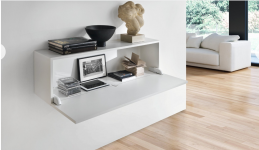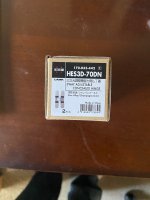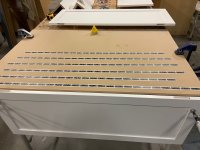4nthony
Member
I'm working on a wall hanging credenza that will have a drop down inset door on one of the cubbies. The inset door will be similar to the door on this console.
With an overlay door, it makes sense in that it's all flush.

For an inset door, how is the door hinged at the bottom? Are there special hinges with an offset? I'm guessing you could add a panel at the bottom to make it flush, but I'm curious if there's a hinge designed to accommodate the offset. The pictures on the website don't show the inside of the cabinet to tell how the door is hinged.
I looked through the Blum catalog but only saw riser hinges. I didn't have any luck finding a drop down hinge.
Can someone point me towards a correct hinge? Preferably something adjustable [cool]
Thanks!

With an overlay door, it makes sense in that it's all flush.

For an inset door, how is the door hinged at the bottom? Are there special hinges with an offset? I'm guessing you could add a panel at the bottom to make it flush, but I'm curious if there's a hinge designed to accommodate the offset. The pictures on the website don't show the inside of the cabinet to tell how the door is hinged.
I looked through the Blum catalog but only saw riser hinges. I didn't have any luck finding a drop down hinge.
Can someone point me towards a correct hinge? Preferably something adjustable [cool]
Thanks!










